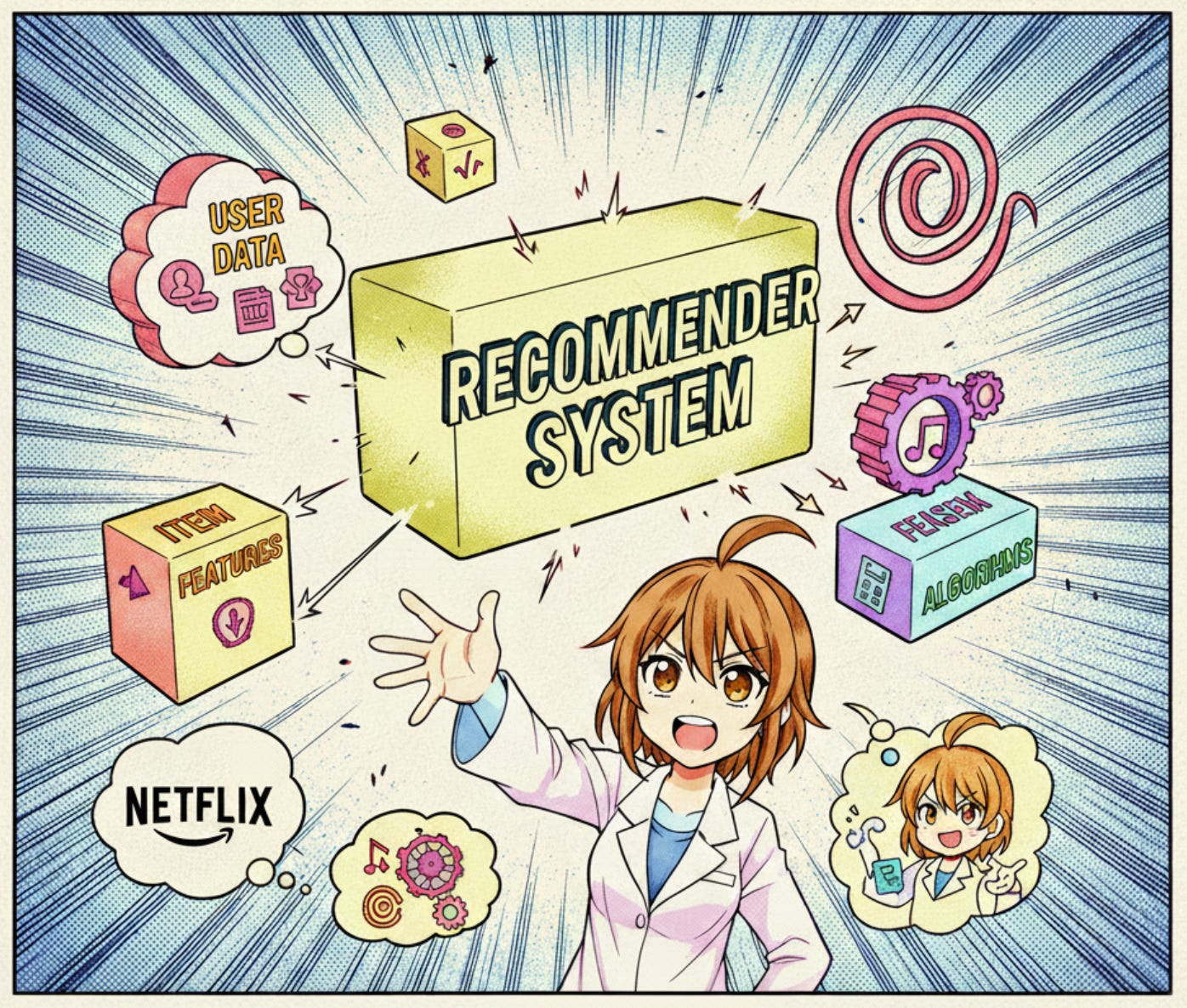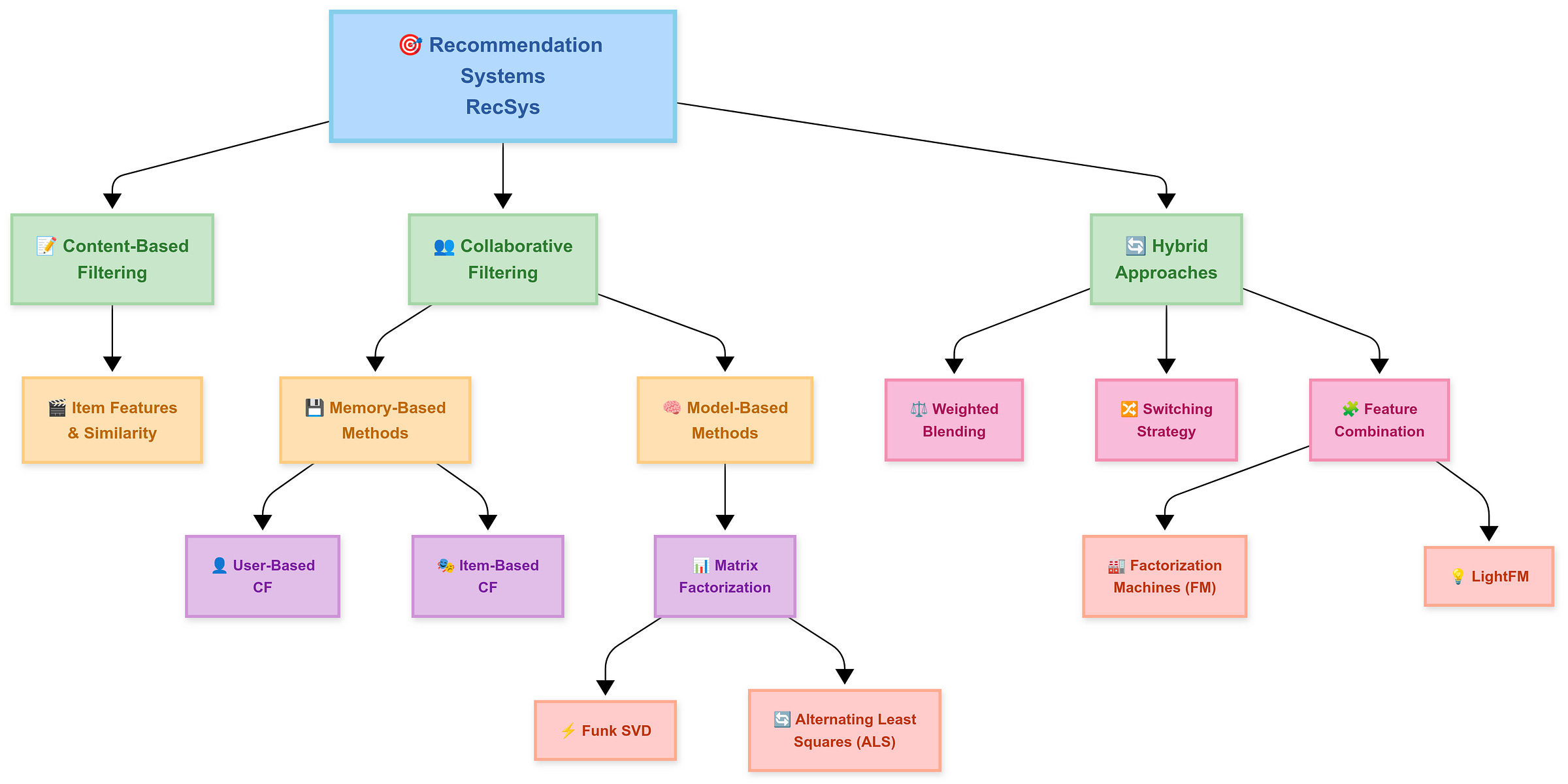RecSys Fundamentals: The Art and Science of Digital Matchmaking
Recsys Series Part 1: Master the three core approaches that power every modern recommendation engine
Ever wonder how Netflix seems to read your mind, serving up that perfect binge-worthy series just when you need it? Or how Spotify crafts playlists that feel like they were made specifically for you? The magic behind these eerily accurate suggestions isn’t actually magic at all—it’s Recommendation Systems, or RecSys as we call them in the industry.
I’ve spent the last four years building these systems from the inside out—first at Meta, where I helped creators discover their audiences, and now at Roku, where I’m working to surface the most compelling content for your living room. What I’ve learned is that while these systems might seem like black magic, they’re actually built on surprisingly intuitive principles that anyone can understand.
This is the first post in my comprehensive RecSys series, the purpose of which is to take you from complete beginner to recommendation system expert.
In this inaugural post, we’ll dive deep into the fundamental techniques that power every recommendation engine—collaborative filtering, content-based filtering, and hybrid approaches. More importantly, you’ll learn how to implement each technique in code and build your own working movie recommender from scratch with these fundamental approaches.
Future posts in this series will cover advanced topics like deep learning approaches, real-time systems, and scaling challenges.
But first, let’s understand the fundamentals.
Ready to peek behind the curtain? Let’s get started.
What’s a Recommendation System Anyway?
At its heart, a RecSys is a sophisticated matchmaker between users and items. The “item” could be anything—a movie, a product, a news article, or even a potential friend on a dating app. The goal is elegantly simple: predict what you’ll love and show it to you before you even know you want it.
This creates a powerful win-win scenario for both the users who no longer need to go through infinite scroll paralysis or choice overload as well as for businesses who get massive improvements in engagement, sales, and customer satisfaction.
But there’s no single “right way” to build this system. Just like there are different approaches to matchmaking in the real world, recommendation systems use different strategies to connect users with content.
The Three Main RecSys Playbooks
There’s no single way to build a RecSys. Instead, we have three main battle-tested strategies, each with its own strengths and weaknesses.
A. Content-Based Filtering
Imagine a super-smart personal shopper who remembers everything you’ve ever liked. If you’re a fan of action flicks with Dwayne “The Rock” Johnson, this system will immediately start showing you more of his movies, regardless of what anyone else thinks and rates them.
Step 1: Get Item Embeddings
We represent each item as a feature vector. For a movie, this could include its genre, actors, director, or keywords from the plot. So We might create a matrix of features like this. This could in practice be a very complex matrix with TFIDF, transformers or what not:
Step 2: Get profile
Your personal profile is then built by using weighted average the features of all the items you’ve enjoyed.
Assuming you enjoyed, Jumanji, and Fast And Furious
Step 3: Get predictions
The system recommends new items that are “similar” to your profile. We often use cosine similarity for this, which essentially measures the angle between your profile vector and the item’s vector. A smaller angle means they’re a closer match.







